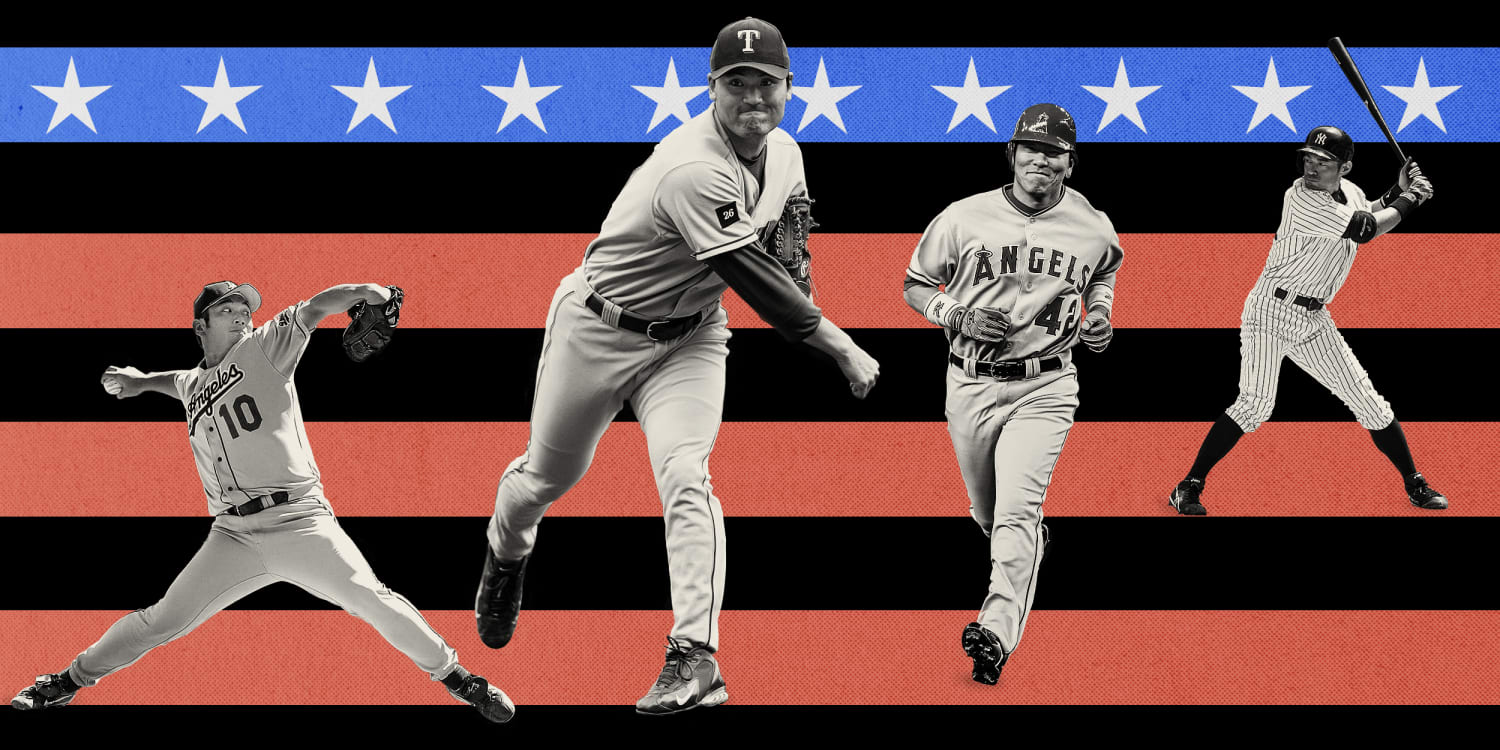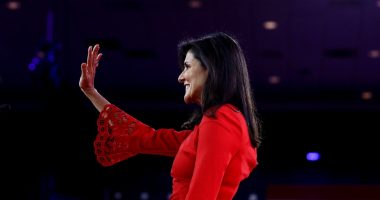
On a spring day at San Francisco’s now-shuttered Candlestick Park, a 26-year-old named Hideo Nomo, in a fresh Los Angeles Dodgers jersey, stepped onto the mound. Gripping the ball, the right-hander started with his arms raised high, then twisted his body so that his back was to the plate and unwound monster pitch after pitch.
Nomo threw five scoreless innings against the Giants that night in 1995, allowing one hit and striking out seven in his Major League Baseball debut. It was a foreshadowing to the rest of his season, in which Nomo was named an All-Star and the National League’s Rookie of the Year. His signature corkscrew windup was swiftly immortalized in the minds of baseball fans.
But perhaps his biggest accomplishment was the impact Nomo, who was only the second Japanese-born player to play for an MLB team, had on the game.
Experts say “The Tornado” ushered in a new wave of Japanese, and more generally, Asian talent, to forever change baseball in the U.S. Greats to follow included Hideki Matsui, Ichiro Suzuki and Chan Ho Park, but despite their skill and the legions of international fans they brought with them, not a single Asian player, including Nomo, has made it yet into the Baseball Hall of Fame.
Before the 2021 induction ceremony on Wednesday, which will once again be absent any inductees of Asian descent, historians and sociologists say that a combination of MLB’s racist roots, contractual constraints and ideas of language and belonging have contributed to the disparity.
“The Hall of Fame is definitely symbolic of what we think of and value as Americans and who belongs in this country,” Christina Chin, an associate professor of sociology at California State University, Fullerton, told NBC Asian America. “If we did have an Asian baseball player who was inducted, I think that would really speak a lot to … the larger landscape of Asian American acceptance into America.”
“Because the Hall of Fame started in 1939, the rules that were initially designed were based out of reality of racial exclusion.”
To understand this racial disparity in the Hall of Fame, Adrian Burgos Jr., a history professor at University of Illinois Urbana-Champaign who examines minority participation in sports, said it’s important to remember that the MLB was founded as an unofficially segregated league in 1869 and remained that way for several decades. Black players only participated in the sport through the Negro Leagues. It wasn’t until Jackie Robinson debuted with the Dodgers in 1947 that the color barrier was broken; however, players of color continued to experience racist attacks from white competitors and fans. Some teams refused to integrate for several years afterward.
“The opportunity for election into the Hall of Fame for individuals who came out of the Negro Leagues, or came out of Asia to MLB, are very much affected by the rules that had been established when MLB was segregated,” Burgos, who’s served as an academic adviser on the Hall of Fame’s museum exhibits, said. “Because the Hall of Fame started in 1939, the rules that were initially designed were based out of reality of racial exclusion.”
Burgos said that after Ted Williams, the white Boston Red Sox great, championed the induction of Black players from the Negro Leagues into the Hall of Fame during his own induction in 1966, conversations started about how to integrate the gallery itself. One particular solution that gained traction was to form a separate gallery to honor outstanding Black players, essentially recreating a segregated system, Burgos said. Though the plan was eventually scrapped, he said it was representative of the league’s racialized and problematic past.
Today, disparities persist in other forms. The Hall of Fame’s induction criteria remains strict, with little room to take into account players’ unique circumstances in the MLB, Burgos said. The rules stipulate that players must have been retired for at least five seasons after playing in the MLB for a minimum of a decade. But Burgos said that oftentimes, it’s not enough to just play well for 10 years — players need to dominate.
For the Japanese athletes in the league, particularly those who paved the way decades ago, this has been a major hurdle. Because of the nature of the agreement between the Japanese League and the MLB for acquiring Japanese talent, Japanese players’ careers are often shorter, and they don’t have sufficient time to showcase their skills and rack up the stats in the U.S., Burgos said. And unlike other sports, the Baseball Hall of Fame does not take into consideration a player’s dominance in international leagues. Many players like Matsui, who was placed on the ballot in 2018 but not elected, had long, phenomenal careers in Japan before signing with an American team.
“MLB, the global brand, they’re happy to see Ohtani globally, beyond the United States, be the face. Do they see Ohtani as being the face that should be marketed here in the United States? That’s the flashpoint. That’s the tension point.”
The politics of language also affects players’ chances of induction, experts say. Ryan Reft, historian at the Library of Congress, whose work is included in the anthology “Asian American Sporting Cultures,” said that the voting bloc is largely made up of sportswriters.
“If many of these Asian players who came over simply didn’t speak great English, or didn’t have great relationships, or even significant relationships … with the sportswriters, that impacts the narrative of their career, because the numbers only tell part of it,” Reft said.
Experts note that because of this, the willingness of teams to invest in translators for their international players ultimately has a part in the way the athletes are remembered. This is particularly evident, they say, in the case of Ichiro, a former Mariners icon who many expect will hold the distinction of being the first Asian player to be inducted into the Hall of Fame once he’s eligible in 2025. His sense of humor and mastery of the art of smack talk has been well-documented among writers, contributing to the story of his career.
“The Mariners invested in the idea that ‘our star player from Japan should be expressing himself in the language that he’s most eloquent, most thoughtful in, and we’ll let someone else do the interview with the team and the translation,” Burgos said. “But not every major league team did that.”
Amid these challenges, one question arises, particularly when discussing Nomo: Shouldn’t impact, or a player’s role in blazing a trail for others, factor into Hall of Fame discussions? Burgos said that to make it in, there are three paths individuals can take: as a player, as a manager or an executive, or as a contributor to the game — and a person can only be evaluated on one of those three paths. This limitation has affected pioneers of color in the past, Burgos said, such as Buck O’Neil, a first baseman and manager for the Kansas City Monarchs in the Negro Leagues, who made history as the first Black coach in the MLB with the Chicago Cubs.
“He was a very talented player, a very important figure … and an important contributor in how so many Americans came to know the history of the Negro Leagues,” Burgos said of O’Neil. “But you can’t combine those three things to say, therefore, he’s a Hall of Famer.”
“The rules that were put into place created a disadvantage to those who transformed the game,” said Burgos, who is in favor using an individual’s impact on the game as a basis for election.
“Asian players have a different version of ‘shut up and play,’… It’s about ‘Be quiet and be grateful.’”
In spite of the current demographics in the Hall of Fame gallery, experts say it’s misleading to cast the sport as a strictly white or American institution, since baseball has taken a shape of its own in Asia, particularly Japan. Since its inception, the U.S. has, in many cases, used the game as a means to advance its imperialistic ambitions in the region, Reft said.
“When America occupies the Philippines and other places, it pushes for particularly baseball, which is seen as indicative of individualism, teamwork, and the kind of ideals you need to succeed in a capitalistic democratic society,” he explained.
But in Japan, where the baseball boom in Asia is concentrated, the sport was used for a different political purpose. By the late 19th century, during the Meiji restoration, a revolution that “restored” the emperor to power and pivoted the country toward industrialization and urbanization, baseball was adopted to “express Japan’s place in international standing,” Reft said. Citing scholar Edward Saïd’s idea of “Orientalism” and the presumption of Western superiority, Reft said at the time the East was seen as feminine and sensual, whereas the West was thought of as “rational and masculine, scientific.”
“Baseball was seen as a way for Japan as a country, and its people, to kind of declare its masculinity,” Reft said.
Even with strong traditions in Asia, Burgos said it’s still difficult for many in the U.S. to accept the idea of an Asian player representing the MLB. The EPSN commentator Stephen A. Smith’s controversial comments over the summer that Angels’ superstar Shohei Ohtani shouldn’t be the face of the sport because he uses an interpreter are somewhat reflective of more pervasive attitudes in the league, Burgos said.
“MLB, the global brand, they’re happy to see Ohtani globally, beyond the United States, be the face,” Burgos said. “Do they see Ohtani as being the face that should be marketed here in the United States? That’s the flashpoint. That’s the tension point.”
Much of this mentality is also observed in the way that assimilation through English is enforced, Burgos said. Though Latino professionals have advocated for more interpreters throughout the league, the MLB has encouraged them to learn English. The opportunity for Asians to represent the league in American culture, Burgos said, is almost “blocked off.”
“Latinos should assimilate to a U.S. English-speaking culture, as folks see it. But Japanese and then Korean players don’t necessarily have to assimilate. They can stay ‘stay foreign,’” Burgos said. “Those things play on … the reality around issues of citizenship and belonging, of how people see Japanese and other Asian people as … almost impossible for them to be American if they retain their culture.”
International players from all regions confront a unique set of racial barriers, Burgos said, and “Asian players have a different version of ‘shut up and play.’ … It’s about ‘Be quiet and be grateful.’”
Reft said he’s cautiously optimistic about the future of the Hall of Fame, as the demographics among sportswriters have shifted, allowing those with backgrounds from these very marginalized communities to play a role in induction.
“We’ve seen the rise of many more sportswriters from nonwhite backgrounds — Bomani Jones, for example, and others who’ve really ascended,” Reft said. “Those writers have more of a sense of those kinds of issues, and perhaps a different perspective on what makes a player good for a number of reasons, both institutionally and culturally.”
For now, Asian Americans and baseball fans await Ichiro’s likely induction into the gallery. But Chin was quick to note that if it does happen, there’s a history that shouldn’t be forgotten.
“If it’s Ichiro, that would be awesome. But Ichiro’s name wouldn’t even be considered without the groundwork of these other players who came before him.” Chin said. “They had to go out there and prove themselves, to defy so many of the stereotypes that we have when it comes to Asian male bodies.”
Source: | This article originally belongs to Nbcnews.com









